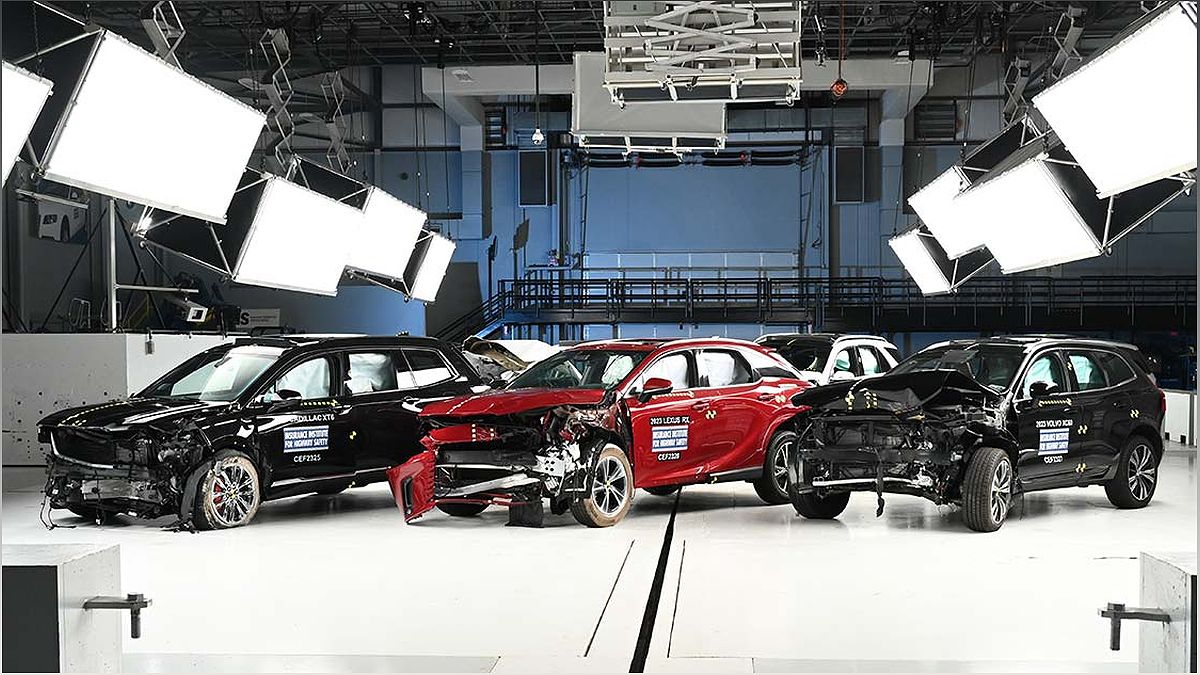The Insurance Institute for Highway Safety (IIHS) recently conducted a crash test to evaluate the safety of backseat passengers in luxury SUVs. Out of the eight vehicles tested, only three - the Lincoln Aviator, Mercedes-Benz GLE Class, and Volvo XC60 - received good ratings. This test highlights the importance of backseat safety and how automakers are addressing this concern. Find out more about the crash test results and the measures being taken to protect backseat passengers in luxury SUVs.
The Importance of Backseat Safety
In the world of automotive safety, the focus has primarily been on protecting front-seat occupants. However, recent research has shown that backseat passengers are at a higher risk of injury in certain types of collisions. This has prompted organizations like the Insurance Institute for Highway Safety (IIHS) to conduct tests specifically aimed at evaluating backseat safety.
When it comes to luxury SUVs, ensuring the safety of all occupants is of utmost importance. The latest crash test results highlight the need for manufacturers to prioritize backseat safety features and design. Let's delve deeper into why backseat safety matters and how it is being addressed in the industry.
Crash Test Results: Top Performers
Out of the eight luxury SUVs tested by the IIHS, three models stood out with good ratings in the backseat safety test. The Lincoln Aviator, Mercedes-Benz GLE Class, and Volvo XC60 demonstrated excellent performance in protecting backseat passengers.
These top performers showcased effective restraint systems that minimized the risk of head, neck, chest, and thigh injuries for backseat occupants. The crash test results highlight the commitment of these manufacturers to prioritize the safety of all passengers, not just those in the front seats.
Room for Improvement: Acceptable and Marginal Ratings
While three luxury SUVs received good ratings, there were others that fell short but still achieved acceptable and marginal ratings. The Acura MDX and BMW X3 were rated acceptable, indicating that they provided a reasonable level of protection for backseat passengers.
On the other hand, the Audi Q5 and Lexus RX received marginal ratings, suggesting that there is room for improvement in their backseat safety features. These ratings indicate a slightly higher risk of injuries to the head, neck, and chest for backseat occupants.
It's important to note that these ratings are not necessarily indicative of poor overall safety performance, as these vehicles may still excel in other areas. However, the ratings do highlight the need for manufacturers to continue refining their backseat safety measures.
Room for Improvement: Poor Ratings
Unfortunately, one luxury SUV in the test received a poor rating in terms of backseat safety. The Cadillac XT6 fell short in providing adequate protection for backseat passengers.
The crash test results revealed that the rear dummy in the XT6 submarined beneath the lap belt, increasing the risk of abdominal injuries. Additionally, there was a moderate risk of head, neck, and chest injuries for backseat occupants. These findings emphasize the need for improvements in the XT6's backseat restraint systems to ensure the safety of all passengers.
Addressing Backseat Safety Concerns
The focus on backseat safety has prompted automakers to take action and enhance the protection provided to rear passengers. Many manufacturers are now incorporating advanced seat belts and airbags in the front row, but there is still progress to be made in extending these safety features to the backseat.
Some luxury SUVs, like the Mercedes-Benz GLE Class, have introduced rear seat belt feeders that automatically extend the belt to positively influence seat belt behavior. These innovative solutions aim to improve the safety of backseat passengers and reduce the risk of injuries.
While the crash test results highlight the need for improvements, it's encouraging to see that more than half of the luxury SUVs tested performed well in the backseat safety test. The industry is moving in the right direction, and with continued focus and commitment, we can expect even greater advancements in backseat safety measures.

